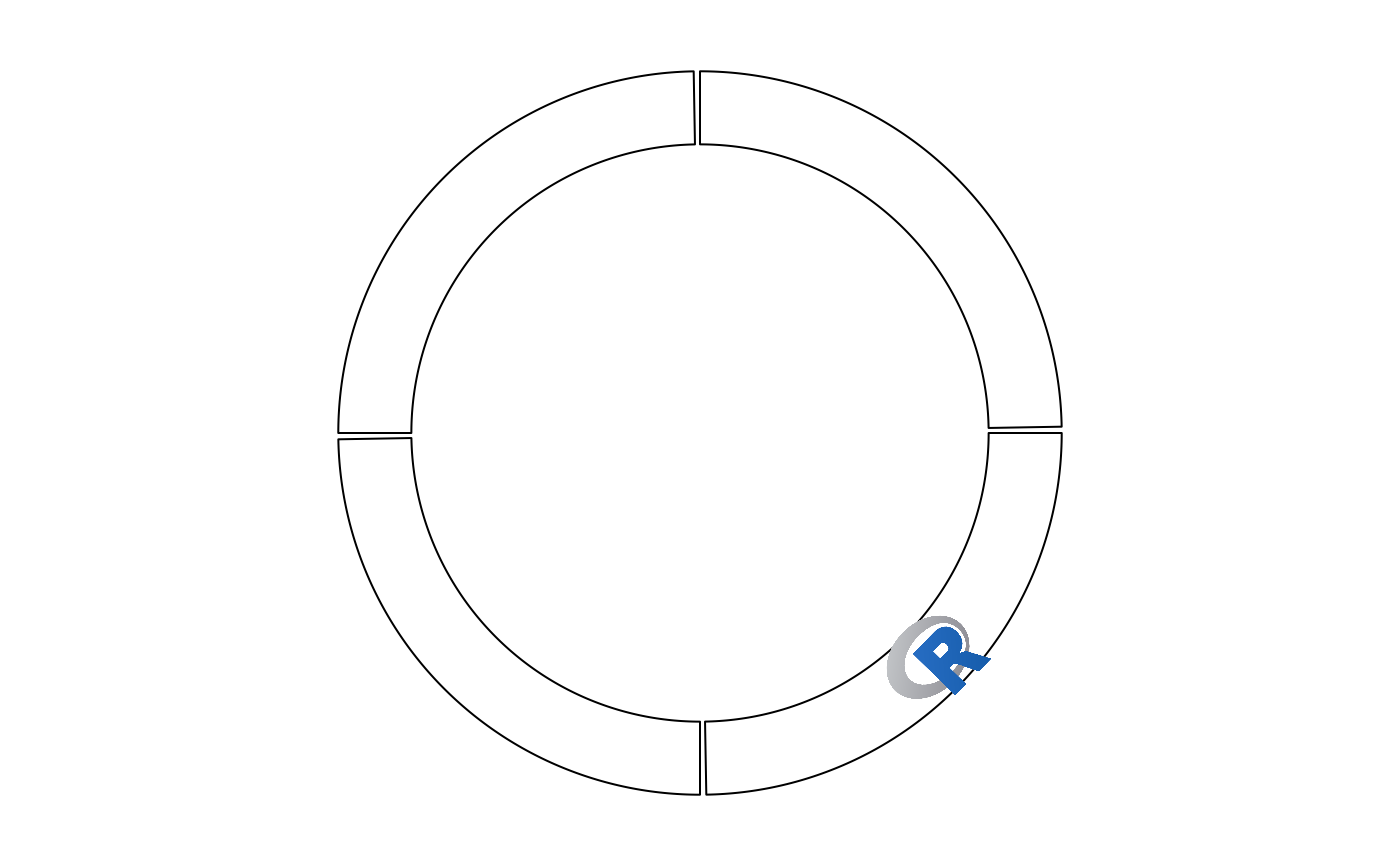Object ccCellGeom will call the function circlize::circos.raster while drawing.
Usage
ccRaster(
image,
x,
y,
width,
height,
facing = c("inside", "outside", "reverse.clockwise", "clockwise", "downward",
"bending.inside", "bending.outside"),
niceFacing = FALSE,
scaling = 1
)Arguments
- image
A
rasterobject, or an object that can be converted byas.raster.- x
Position of the center of the raster image, measued in the data coordinate in the cell.
- y
Position of the center of the raster image, measued in the data coordinate in the cell.
- width
Width of the raster image. When
facingis one of "inside", "outside", "clockwise" and "reverse.clockwise", the image should have absolute size where the value ofwidthshould be specified like20mm,1cmor0.5inche. Whenfacingis one ofbending.insideandbending.outside, the value ofwidthis measured in the data coordinate in the cell.- height
Height of the raster image. Same format as
width. If the value ofheightis omit, default height is calculated by taking the aspect ratio of the original image. But whenfacingis one ofbending.insideandbending.outside,heightis mandatory to set.- facing
Facing of the raster image.
- niceFacing
Facing of text. Please refer to vignette for different settings.
- scaling
Scaling factor to resize the raster image.
Value
Object ccCellGeom
Examples
# \donttest{
library(circlizePlus)
library(png)
image <- system.file("extdata", "Rlogo.png", package = "circlize")
image <- as.raster(readPNG(image))
library(circlizePlus)
cc <- ccPlot(sectors = letters[1:4], xlim = c(0, 10))
track <- ccTrack(ylim = c(0, 1))
cell <- ccCell(sector.index = "a") + ccRaster(image = image, x = 5, y = 0.5,
width = "2cm", height = "2cm", facing = "inside", niceFacing = TRUE)
track <- track + cell
cc + track
 # }
# }